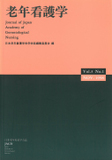Japanese
English
- 販売していません
- Abstract 文献概要
- 参考文献 Reference
大腿骨頸部骨折を経験した高齢者の退院3〜6ヶ月後のADLの推移と生活環境,および家族の意識について19名の骨折高齢者と14名の同居家族に面接調査を実施した.その結果,以下のことが明らかになった.
(1)ADLに関する3つの尺度は受傷前に比べ,退院3〜6ヶ月後のスコアが低下する傾向が認められた.
(2)家族からの骨折高齢者の生活上の行動制限の有無が,身体活動能力そのものではなく,むしろ社会的生活機能や日常生活の行動範囲など,骨折高齢者の生活の質の低下や広がりの抑制に関連していることが示された.
(3)家族の骨折高齢者への助言あるいは制限は,必ずしも骨折高齢者の能力や危険の程度に見合ったものではなかった.
(4)家族,骨折高齢者の多くが,実際に看護婦による退院指導を受けているにもかかわらず,退院指導を受けたと自覚していなかった.
以上の結果から,①患者の能力に見合った生活動作,生活範囲の維持に関する具体的な指導,②家族の不安を軽減するための具体的指導が必要であると考える.
Nineteen elderly patients and their family members were interviewed prior to hospital discharge and again three to six months after discharge regarding (1) elders functional status measured by three assessment questionnaires (ADL, IADL, Scope of Daily Mobility), (2) their comprehension of discharge information, (3) elders' post-discharge home life including interaction with family, participation in social activities, and household environment.
There were significant correlation between pre-injury and post-discharge functional ratings. Negative relationship were found between the elders' post-discharge functional status and the families restrictions on the elder's activities including walking upstairs and out-of doors. While these restrictions were meant to prevent the elders' fall they in fact diminished the scope of the elders' activities, social roles, and life pleasure in general.
Directions for effective discharge education were suggested: (1) predict the elders' recovery level from pre-injury functional status measurements, and (2) using realistic levels of daily functions data, advise families not to overly restrict elders.
Copyright © 1998, Japan Academy of Gerontological Nursing All rights reserved.


